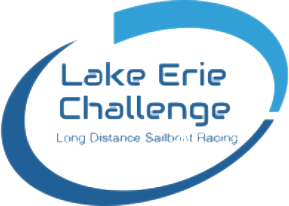- Lake Erie Challenge: Long Distance Sailboat Racing on Lake Erie

200 MILES OF HIKING
June 2, 2021
PUFF ON! STAYING COMFORTABLE IN BREEZY CONDITIONS
June 2, 2021Starting: Prepare for a good start with these tips:
- Get out to the course early (1 hour) to sail up and down wind
- Review the weather online the night prior and morning of the race
- Detect current in velocity and direction
- Recognize the good boats and not so good boats
- Develop a consistent technique to determine favored end
- Try to achieve a good line site with a building onshore
- Ping the ends and use a starting tool
- Make a good guess on which side of the course may be favored
- Sail by committee boat at warning single on starboard aiming at the pin
- Return from pin at a time to be at top 1/3rd, middle or bottom 1/3rd
- Look where the good boats are
- Set-up distance from the line based on wind speeds
- Pull the trigger (trim sails) at the proper time
- Sail a high-angle target speed

Use all the possible clues to get comfortable with your plan before the start. By sailing early you will get a feel for which side of the course looks better. If not, think about a plan that would allow you to start near the favored end, yet in a third section. If the boat is favored, consider starting in the upper third or if the pin is favored, lower third.
Use information about current and wind pressure in the last two minutes to help with your last tack to the start. If you use a starting tool like the Pro Start, use the distance from the line to determine where to set up. Twenty meters above is only three boat lengths in a Melges 20, so determine in light, medium, and heavy air, a distance that will allow you to be up to speed at the gun. Twenty meters might be good for light air while 30 could be better for medium pressure as 50 would be for big breeze.
Your clues on where to start can be enhanced by the setup of different boats. When making a port approach toward the starting boat, look for the better boats. When in doubt, set up to leeward of the fast boats and to windward of the slower boats. Use the boats to windward as a clue when to start trimming in for the start. If the boats above you are going, there is a good chance you will be protected from being over early. Usually you will have a good first leg if you start and can sail straight for five minutes. If you have to tack because of a poor set up, often the result will be bad.
The First Leg
Keep in mind:
- Your early plan based on weather and local condition
- The direction the good boats are sailing
- The current, wind, or waves
- The direction of the first shift (oscillation or persistent)
- How are you going?
- Where you are on the course (left, middle or right)
Use the first leg as the set-up for the rest of the race. Your goal should always be to stay in touch with the top group. Shortly after the start, observe if you are sailing straight with the best boats or have they tacked away. If you had a poor start and you had to tack away, look for the clear lane to get you back in touch with the better boats. Use your clues prior to the start for direction, yet try to stay around the best group. Once the fleet spreads out and your position is near the top third of the fleet, use all your information to get closer to the leader and eventually become the leader.
Questions as you get closer to the top mark:
- What is my best path for clear air?
- How do I avoid the long starboard lay line?
- What wind phase am I in?
- How can I avoid problems at the top mark?
- What gybe do I want to be on after the set?
- How has the course geometry changed based on wind direction?
- Is there current at the top mark and what direction?
Pick up more clues as you sail up the first leg to help improve your position on the next windward leg and the first leeward leg of the race.
First Leeward Leg
- Is the course square or has the wind direction favored one gybe over the other?
- What phase is the wind in?
- Are the leaders staying on starboard?
- How is the current changing the course?
- What gate do I want to round based on wind direction and side of the course for leg 2?
- What gybe are the best boats on?
- Looking aft where is the best pressure?
Just like on leg one, observe the gybe of the better boats. Base you decision to continue on starboard or gybe on your position, the wind phase, the course geometry, current, wind pressure and then the top group. If the wind has been oscillating on the upwind leg and you are currently lifted (sailing higher than normal), gybe, and sail the headed angle. Use the clues to take advantage of the wind shifts yet still stay in touch with the best boats in the fleet. Keep in mind which gybe is the long gybe and again, which gate you prefer. If you really want the right gate looking downwind and prefer to sail early left on the next upwind leg, sail the starboard gybe longer and come in closer to the port lay line for inside position on that gate. As you get closer to the bottom of this leg ask questions again on how to exit that mark and sail first to the side you wish while keeping the good boats in view.
Questions as you approach the leeward gates:
- Which gate has the least traffic?
- What gate will allow you to get the side wanted upwind?
- What gate did most of the boats round?
- What effect does the current have on the gates?
- How should I round to keep our air clear?
The clues at the bottom of the second leg should help you decide on what side could be good upwind.
Third Leg
This is the leg to either protect your good position or to attack from behind. Based on your position you can sail at different risk percentages. If leading or near the top, the risk factor should be low while you are either covering the boats behind or staying close to the leaders.
Second Windward Leg
- Get clear air sailing in the direction you choose
- What wind phase is the wind in?
- What tack is longer?
- How is the current affecting this leg?
- Where did the good boats go?
- Is this leg similar to the first?
Use this leg to protect or improve your position. Use the clues from the first upwind and leeward leg to help develop a plan before you round the gate.
Last Leg Downwind
Like the second upwind leg, this is the leg to protect or attack. After three legs of information, use all the clues to help you decide prior to the top mark what gybe to be on after rounding. If near the lead, protect your position; if you’re back further than expected, become more aggressive on your decisions.
Clues for the last leg:
- What worked on the first leeward leg
- What has changed since the first leeward leg
- Is the course square?
- Where is the best pressure?
- Has the wind made one gybe more favored?
All your clues will make this leg less stressful by either sailing with the good boats or attacking the wind shifts.
We seek answers, yet sailing has many mysteries that cannot be explained. Use all the clues you have picked-up from past events as well as your present situation to make your race more enjoyable and successful.


